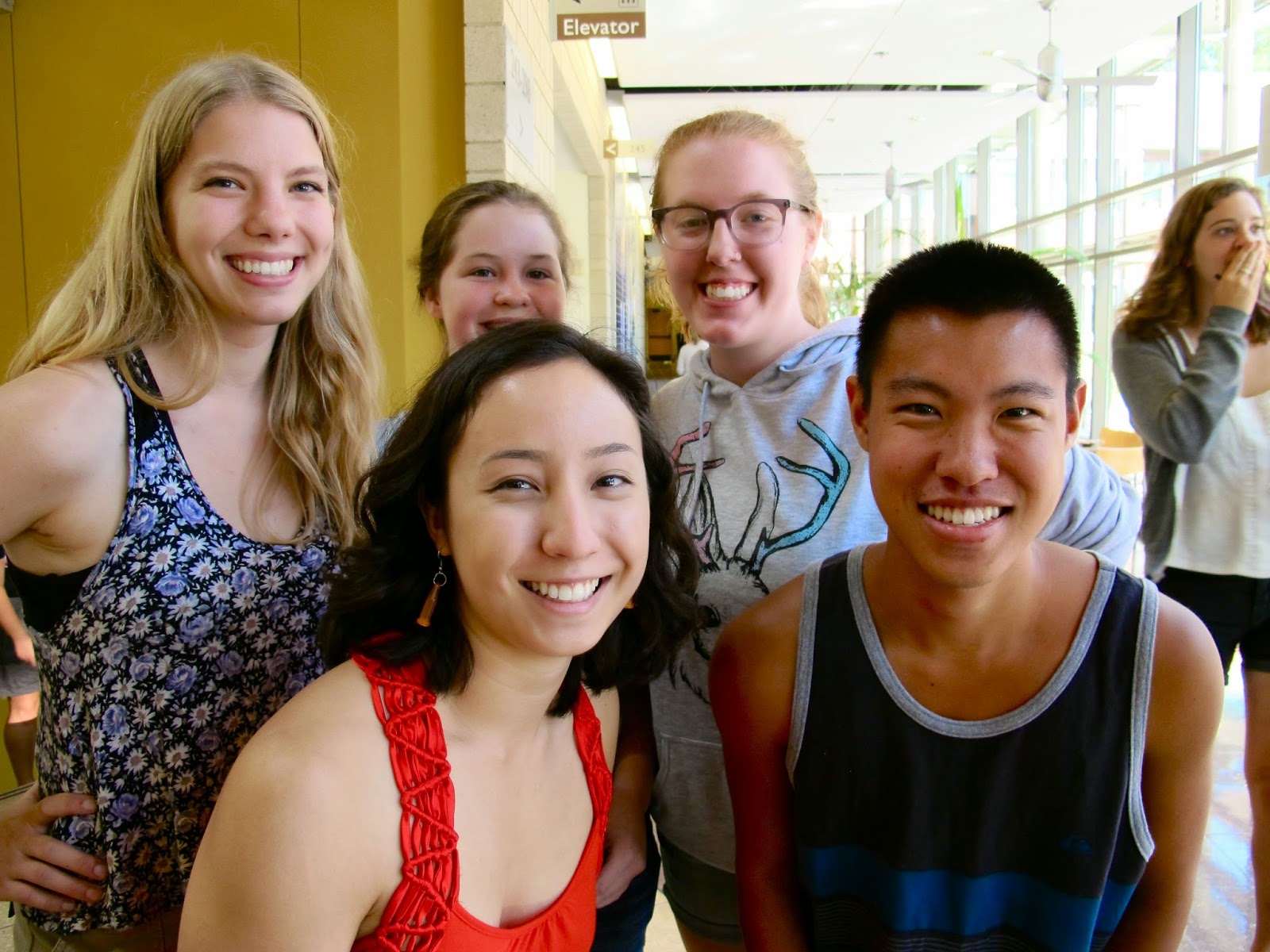Sadly, due to my own struggles in academia, and my position in the Trophic Web of Science at a small undergraduate institution (and without grants at present), I cannot make very big contributions to the field. There are some true giants in "Bdellovibriology," like Liz Sockett, Edouard Jurkevitch, John Tudor, Henry Williams, Daniel Kadouri, and Eckhardt Strauch. There are few others, though some friends of mine are starting in the field!
Bdellovibrio is not easy to work with on a daily basis, nor to unravel genetically, but I adore the wee beast. I wrote a paper long ago about predatory microbes, and my lovely and brilliant bride Jennifer Quinn drew me the life cycle of the ravening microbe.
Many other more detailed or less stylistic depictions exist, but I like Jenny's. There has always been, and remains, a great deal of mystery about Bdellovibrio's activities, which lead a former classroom student of mine at Occidental College to draw this great "Borg" view of the tiny predator! Prey cells WILL be assimilated, after all.
When I took the life-changingt Marine Biological Laboratory's "Microbial Diversity" course at Woods Hole in 1996, the great microscopist Tom Pitta took some marvelous photomicrographs for me of Bdellovibrio attacking E. coli, seen here:
And a feeding frenzy by Bdellovibrio against E. coli here (cue the theme to "Jaws," please).
While I was in Los Angeles, I did some fascinating work with a fine scientist, Megan Nunez, who took some truly awesome atomic force micrographs of Bdellovibrio attacking a biofilm here.
Which brings us to today's festivities! The Summer Research Program here at the University of Puget Sound is a great experience for our undergraduates. They get a chance to really work hard on a research problem, without those pesky classes to get in the way. But research students need to blow off some steam from time to time. One way is by fun events---in this case, our famous, delicious, and totally fabulous "Lab Themed Dessert" competition.
And make no mistake, the competition is intense! Students struggle to create tasty desserts reflecting their research projects or lab topics. I have been fortunate in having Madison Cox in my laboratory, who is a great student, hard worker, and a fabulous baker. Last summer, while she was working (as she does this summer) on the cloacal microbiota of the Striped Plateau Lizard (we have found some interesting aspects of these microbiota/communities, as seen here), Madison entered the Lab Themed Dessert competition for the first time.
Madison won "Best Tasting" and "Most Aesthetically Pleasing" awards last summer for this masterpiece (note the swabs, inoculating loops, microbes and, um, back end of the lizard---as a cake).
This year, Madison decided to honor Bdellovibrio, by depicting the predator attacking and invading hapless E. coli!
A view to the front shows Madison's attention to anthropomorphic detail.
I got a kick out of watching Bdellovibrio invade the periplasm of the prey cell, as seen below. The prey cell does not seen unhappy about this unfortunate process, I note. Note also the invading cell visible through the outer membrane of E. coli.
One of my other research students, Katie Frye, wrote up a nice summary of the inspiration for Madison's cakey creation. Collaboration abounds!
Madison did have an interesting approach to depicting the petite predator cells! No, Bdellovibrio does not possess eyes nor teeth, but it is undeniably cute.
And here is my summer lab crew. Clockwise from far left: Katie, Young Tia (our high school volunteer), Madison, Austin, and Cheyenne.
Since Tia doesn't like her photograph taken, we forced the issue with great enthusiasm, as you can see. Never let your labcrew know your weaknesses. Ever.
Madison was very proud of her creation as she deftly dissected it for the crowd of ravenous summer research students.
It's well known that Bdellovibrio does not attack human cells. But Madison seems not so sure.
Katie shares Madison's concerns.
Here is Madison receiving her "Most Creative" award from Dr. Leslie Saucedo in my department (in charge of the Summer Research Program).
Aaaannnddd...Madison coming right back up to receive her award for "Most Aesthetically Pleasing." Well, Madison did kind of bodyslam the competition into submission with her entry. Not that I'm prejudiced in favor Madison's artwork.
Not at all.
Madison barely contains her glee at winning two of three awards, for the second year in a row. She has skillz, friends. Mad skillz.
And in the aftermath, three progeny Bdellovibrio cells surround a clay representation of the life cycle of Bdellovibrio created as a gift several years ago by a former student, Kat Schmidt.
And finally, Madison explains both Bdellovibrio and her culinary creation, in this YouTube video. Thanks to Katie Frye for writing up the summary.
It was a great day for Madison. For Bdellovibrio. For Martin's Microbial Menagerie. The winning entry was ambitious, delicious and predilicious!
Thanks for sharing with me a good day during Summer Research at the University of Puget Sound!





















No comments:
Post a Comment
I am happy to hear your comments and suggestions. I hope to avoid spammage. We shall see how that works out!